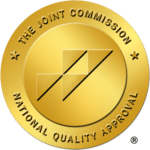Prefer to contact us online instead?
Use this form to send us a message. One of our recovery specialists will respond promptly.
What is Fentanyl?
Fentanyl is a synthetic opioid with a rapid onset and short duration. Fentanyl is significantly potent; it is 50 to 100 times more potent than morphine, making fentanyl addiction treatment critical. It is a Schedule II controlled substance, meaning that it has a high potential for abuse and addiction.
The opioid analgesic fentanyl is a strong prescription painkiller that is similar to morphine but comes in a variety of forms including:
- Transdermal skin patches
- Lollipops (Actiq)
- Sublingual fentanyl
- Fentanyl injection (Sublimaze)
- Fentanyl citrate syrup (that is sometimes combined with other ingredients to develop a various types of illicit fentanyl)
Fentanyl was first synthesized in 1959 by Paul Janssen. After being introduced as an intravenous anesthetic under the trade name Sublimaze, fentanyl began being used for pain management in 1968. It is available legally only through a prescription issued for severe pain. Unfortunately, however, illegal fentanyl use has resulted in thousands of overdose deaths per year since 2015.
What Is Fentanyl Used For?
Fentanyl is a powerful opioid used to manage pain in cases where other painkillers are ineffective. Fentanyl can be prescribed for pain management, as a pre-operative medication or for post-operative pain relief treatment options to cancer patients. It works by slowing breathing and decreasing blood pressure which produces the euphoric effects sought after by addicts.
If you experience fentanyl withdrawal symptoms after not using this drug for a while, it is important to seek help from a reputable fentanyl detox center. This will enable you to detox safely and receive adequate care during your fentanyl withdrawal period.
Behavioral therapies may help fentanyl abusers control their drug use and avoid relapse, but many fentanyl addicts will require medication alongside counseling. Some fentanyl-dependent people have successfully been treated with naltrexone, while others have been helped by buprenorphine.
Naloxone has also been shown to be effective against fentanyl overdose, though it cannot treat dependency itself. Further fentanyl addiction treatment should be carried out under the supervision of doctors experienced in treating opioid addictions. Medication can be taken for up to two years or more after a fentanyl addict has stopped abusing the drug.
Developing Fentanyl Tolerance and Dependence
As with any addictive substance, fentanyl creates tolerance and dependence. Two milligrams of fentanyl can be lethal depending on a person’s body size, tolerance, and past usage. DEA analysis has found counterfeit pills ranging from .02 to 5.1 milligrams (more than twice the lethal dose) of fentanyl per tablet.
People who take fentanyl for a long time may need more and more of the drug to get the desired effects. They may also start to feel sick when they stop taking fentanyl, a condition known as withdrawal.
Those in fentanyl addiction treatment will likely need to be detoxed under medical supervision. This means that they will be given medications to help them cope with the withdrawal symptoms. Some fentanyl-dependent individuals have successfully been treated with naltrexone, while others have been helped by buprenorphine.
Fentanyl Addiction Statistics
Fentanyl addiction has been steadily rising over the years. According to the CDC, synthetic
opioids (like fentanyl) are the primary driver of overdose deaths in the United States. Deaths involving synthetic opioids other than methadone (primarily fentanyl) continued to rise with more than 36,359 overdose deaths reported in 2019.
With a crackdown on prescription opioids, fentanyl addiction has been on the rise recently. According to NIDA (National Institute of Drug Abuse). More than 70,000 Americans died from a drug-involved overdose in 2019, including illicit drugs and prescription opioids. Fentanyl is often mixed with other drugs such as heroin or cocaine, which increases the likelihood of fatal overdose.
This is likely due to the fact that fentanyl is often mixed with heroin, making it difficult to know just how potent a batch of drugs is. Illegal trafficking of fentanyl has increased along with its abuse, with fentanyl precursors coming from China being unable to be completely stopped. Many addicts purchase fentanyl illegally on the internet or through the black market.
Fentanyl addiction can be deadly, but it can also be successfully treated. If you or someone you know is struggling with fentanyl addiction, seek help immediately. There are many options available for fentanyl addiction treatment, and with the right support, recovery is possible.
How Does Fentanyl Abuse Develop?
Considering how addictive fentanyl is, it’s not surprising that fentanyl addiction is on the rise. In fact, fentanyl is now responsible for more overdose deaths than any other opioid. Many people who become addicted to fentanyl start out by abusing prescription painkillers. Once their tolerance to these drugs builds up, they may turn to fentanyl because it’s stronger and cheaper than heroin.
Fentanyl is deadly because of how subtly it is introduced into the illicit market. This is largely due to the fact that fentanyl is often mixed with heroin without the users’ knowledge. This can be extremely dangerous, as fentanyl is much stronger than other opiates and can easily cause an overdose. The number of fentanyl-related deaths has more than tripled in just four years, from 1,905 to 5,544 in 2016.
Many people who become addicted to fentanyl struggle to overcome their addiction. This is because fentanyl withdrawal symptoms can be extremely uncomfortable and painful. There is no one-size-fits-all approach to fentanyl addiction treatment. However, some of the most common treatments include detoxification, behavioral therapy, and medications such as methadone or buprenorphine.
Detoxification is the process of withdrawing from opioids under medical supervision. It can be very dangerous to try to detox on your own, as the withdrawal symptoms can be intense and potentially life-threatening.
What Are the Effects of Fentanyl Abuse and Dependence?
The side effects of fentanyl abuse and dependence can be very dangerous and even deadly. Fentanyl binds to the opioid receptors, which is a chronic relapsing brain disease. People who are addicted to fentanyl will continue to use the drug, even though they know it’s harming them.
Fentanyl dependence occurs when the body becomes used to the effects of fentanyl and needs the drug to function normally. As fentanyl withdrawal progresses, other symptoms emerge.
The fentanyl withdrawal timeline can last for weeks or months depending on how long fentanyl was abused and how much fentanyl was taken. The fentanyl withdrawal timeline also depends on whether medications (such as methadone) were used to stop fentanyl abuse and which medications were used.
Withdrawal symptoms can be very severe, including:
- Fever
- Chills
- Nausea
- Vomiting
- Diarrhea
- Sweating
- Joint pain
- Bone pain
- Depression
- Constipation
- Muscle aches
- Insomnia
- Anxiety
What Are My Fentanyl Addiction Treatment Options?
Treatment centers for fentanyl addiction can help you quit fentanyl safely, overcome a fentanyl habit and get through fentanyl withdrawal. Our fentanyl treatment program gives addicts access to the best fentanyl treatment medications and other resources so they can learn about fentanyl, understand fentanyl abuse and respond appropriately when fentanyl dependency becomes an issue.
Fentanyl addiction is a serious problem that requires immediate attention. There are many treatment options available, including medication-assisted treatment, dual diagnosis treatment, and aftercare and relapse prevention services. With the right treatment, recovery is possible.
Partial Hospitalization Program (PHP)
A partial hospitalization program for addiction is an intensive approach to rehab for substance use disorders. While in a PHP, patients do not need to live at the treatment center. Instead, they may attend treatment during the day and return home at night. Individuals also participate in group and individual therapy as well as other activities that promote healing and sobriety.
One important aspect of fentanyl addiction treatment is medication-assisted treatment. This involves using medications like methadone or buprenorphine to help individuals wean off fentanyl and other opioids.
These medications stabilize the brain chemistry and minimize withdrawal symptoms, making detox less painful and more likely to be successful. After completing a partial hospitalization program, many people transition into another less intensive outpatient program. This allows them to continue receiving support while they return to their everyday life.
Medication-Assisted Treatment
Medication-assisted treatment would be a viable option for fentanyl addiction. This type of treatment involves using medications like methadone or buprenorphine to help individuals wean off fentanyl and other opioids. These medications stabilize the brain chemistry and minimize withdrawal symptoms, making detox less painful and more likely to be successful.
Many people transition into an outpatient program after completing residential rehab. This allows them to continue receiving support while they return to their everyday life.
Methadone
Methadone is a long-acting opioid that helps reduce cravings for fentanyl and other opioids. It can be taken orally or through a needle, and it comes in tablet or liquid form. Methadone is only available through a prescription from a certified doctor.
Buprenorphine
Buprenorphine is a middle-acting opioid and is available as a pill or film (placed under the tongue). It works by binding to the same receptors as fentanyl, but it does not produce as strong of an effect. This reduces cravings and withdrawal symptoms.
Naloxone
Naloxone comes in injectable or nasal spray form and reverses fentanyl’s effects on the body. This means that if fentanyl is taken while naloxone is in the user’s system, no effects will be felt. Naloxone can be used as a treatment for fentanyl overdose.
Outpatient Treatment
Outpatient treatment for fentanyl addiction typically includes medication-assisted treatment and behavioral therapy. Behavioral therapy helps individuals learn how to cope with stress, triggers, and cravings.
It can also help individuals develop healthy coping skills and learn how to deal with difficult situations without using fentanyl. Outpatient treatment programs vary in length but typically last for several months.
Behavioral therapy helps individuals learn how to cope with stress, triggers, and cravings. It can also help individuals develop healthy coping skills and learn how to deal with difficult situations without using fentanyl.
Dual Diagnosis Treatment
Individuals who are addicted to fentanyl may also have a mental health disorder. Many recovering individuals are battling a combination of substance use and mental health disorders. Dual diagnosis can improve a person’s chances of sustainable recovery.
Treatment for both the addiction and the mental health disorder is known as dual diagnosis treatment. This type of treatment typically includes medication-assisted treatment and behavioral therapy, as well as counseling and support groups.
Aftercare
Recovering fentanyl addicts will need aftercare and relapse prevention services to help them stay sober. Aftercare may include therapy, 12-step meetings, and sponsors. Relapse prevention services can help individuals learn how to identify triggers that may lead to a relapse and strategies for preventing a relapse from occurring. Narcotics Anonymous can be a wellspring of knowledge by sharing your experiences with others on the same path.
A relapse prevention plan could help you prevent fentanyl abuse. Relapse affects a large percentage of recovering individuals. Many fentanyl users are also addicted to other substances, such as benzodiazepines, opioids, or cocaine. This means that the fentanyl abuser must be treated for all of these addictions at once. If you are a fentanyl addict, it is important to seek fentanyl addiction treatment at a professional drug rehab center.
There is no single best way to treat fentanyl addiction. Each person’s needs and preferences are different, so there is no one-size-fits-all treatment.
Lifetime Recovery Can Aid Those Suffering from Fentanyl Abuse
If you or someone you love is addicted to fentanyl or any other drug, reach out to Lifetime Recovery today to start on the path to recovery. Fentanyl addiction is a serious problem that can have devastating consequences. However, there are treatments available that can help people overcome their addiction and get their lives back on track.
References:
https://www.drugabuse.gov/publications/drugfacts/fentanyl
https://www.drugabuse.gov/drug-topics/trends-statistics/overdose-death-rates
https://www.dea.gov/resources/facts-about-fentanyl

